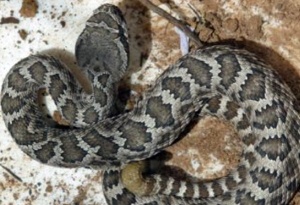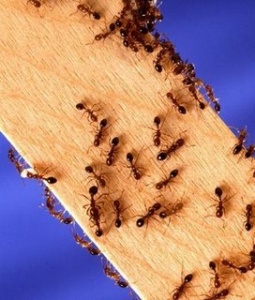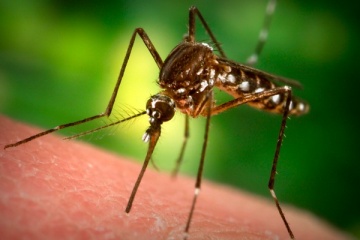
Hot weather! Long days! Everyone's out enjoying it– including bugs, spiders, snakes and other creatures. A good cause for bug bite remedies, yes?
Whether you're taking a family hike, heading to the beach, or relaxing in your own backyard, creepy crawlies can pose a threat to adults and kids. Though these creatures are part of nature, you and your family can learn to live with them safely with a bit of prevention, planning, and awareness.
How to identify the villains
Snakes
Snakes aren't an uncommon sight during the hot days and warm summer nights in Southern California. They come out of hibernation in early March and most don't return to their dens until November. Typically, they seek shade during the heat of the day and head out to hunt during the cooler hours of the evening and overnight.
There are more than 30 species of snakes in southern California and most of them are harmless. Garter snakes, gopher snakes and colorful king snakes are some common snakes you may encounter that aren't dangerous. Here's a great photo guide for rattlesnakes, look-alikes, and other common, local snakes.
The 6 poisonous species in southern California are all rattlesnakes. Although any snake can potentially bite if disturbed or threatened, non-poisonous snakebites can safely be treated at home. Rattlesnake bites on the other hand require immediate medical care! Anti-venom is the only antidote for a venomous snakebite.
The best way to avoid snakebites is to take precautions against running into them in the first place! At home, keep an eye out for snakes in cool areas such as under bushes or flowerpots, in woodpiles, in garages or near swimming pools. Snakes will wade in small kids' sized pools, and they'll also hole up in covered sandboxes or playhouses. Parents should check out the yard before sending kids out to play, and teach kids what to do if they encounter a snake.
Snakes are generally not aggressive, and rattlesnakes will sound out a warning with their rattle to give you a chance to back off. Tell children to listen for a rattle sound and back off slowly if they encounter any snake. Making plenty of noise when you're out hiking or even gardening can be all it takes to scare off a snake and prevent a snakebite injury.
Spiders
Like snakes, most spiders in Southern California are harmless. A non-venomous spider bite may look like an insect bite and cause minor discomfort or itching. Bites by venomous spiders on the other hand can be more serious.
There are three types of spiders and bites to watch out for:
- The black widow- These are shiny black spiders and the female has a red hourglass shape on her back. A bite appears like a target, and symptoms include muscle pain and cramps and possible weakness, headache, nausea and difficulty breathing. Although black widow bites are rarely fatal, they do require medical treatment if symptoms of venom injection occur. Young children in particular are susceptible to black widow venom poisoning.
- Wolf spiders and tarantulas – Watch out for these two spiders after rainfall and in damp or wet, wilderness areas! Both spiders are big and have large fangs that can tear the skin, and they are active day and night. Bites often cause redness, pain and swelling, but bites aren't necessarily dangerous unless an allergic reaction occurs. Swelling can last for several days, but if infection sets in or symptoms worsen, seek medical care.
One spider you DON'T need to worry about in Southern California is the brown recluse. Although people often tell stories about brown recluse bites here, there are actually no brown recluse spiders in our state.
When a spider bite occurs, the best thing to do is wash the area with soap and water. If no symptoms of venom poisoning develop, keep the bite area clean. Homeopathic bug bite remedies can be administered to relieve swelling and pain.
Scorpions
Scorpion bites are painful, but they're not venomous. The pain is usually milder than a bee sting. In the case of an allergic reaction, medical care is needed. Otherwise, scorpion stings can be treated at home just as bee stings.
Insects
 Ticks, bees, mosquitoes, fire ants and fleas are some common insects that can cause annoying, painful or potentially harmful stings or bites. Ticks can carry Lyme disease and other illnesses, so it's important to remove and have any ticks tested for disease.
Ticks, bees, mosquitoes, fire ants and fleas are some common insects that can cause annoying, painful or potentially harmful stings or bites. Ticks can carry Lyme disease and other illnesses, so it's important to remove and have any ticks tested for disease.
Bee and fire ant season can last through October in southern California, and stings or bites can be very painful. Bee and ant stings or bites are only dangerous if you're allergic. Stings from wasps, honeybees, yellow jackets and other bees as well as fire ants can safely be treated at home with homeopathic bug bite remedies. The best way to avoid bee and fire ant injuries is to teach children to respectfully avoid them.
Fleas are another issue you may have encounter, even if you don't have pets. Flea bites appear as tiny red bumps on the skin that seem to keep reappearing. The best way to prevent and get rid of fleas is to remove and/or clean carpets, curtains, blankets and bedding regularly and thoroughly. If you do have pets, use try a safe, natural flea preventative treatments to keep them and your home flea-free.
Prevention
DEET (N,N-Diethyl-meta-toluamide) is the most common and effective bug repellent ingredient on the market. To be fair, this chemical is said to be “safe” for moderate topical use, however, it is still a toxic chemical, so I would avoid it unless absolutely necessary. For young children, it may be better to stay indoors when the bugs are relentless. Here's what I do when traveling to the “deep woods” or other places you want to keep bugs “Off!”:
-
Go equipped with one or two natural bug repellents (home-made or store-bought) that contain lemon eucalyptus.
-
Apply the natural repellent often (at least every hour or two), and more concentrated than chemical repellents.
-
Wear protective clothing to reduce the area for possible bites.
-
Burn several citronella candles and hang out by the fire as bugs are deterred by the smell and smoke.
-
If you're not game for bugs spoiling your outdoor fun, have some heavy-duty repellent handy. Before resorting to a full-body spray, first try spraying clothing only and using natural product on your exposed skin.
Treatment
Natural sting and bug bite remedies
The best way to handle a non-allergic bite or sting is to make a paste of baking soda and sea salt water to draw out venom. You can also rub fresh basil leaves to the wound to release volatile oils, and aloe can be used to lessen pain.
Homeopathic remedies for bites or stings
There are many homeopathic remedies that can be used to relieve the pain and swelling of a bite or sting. It's a good idea to have one or more of these bug bite remedies on hand throughout the summer.
Hyland's “Bug Bite” ointment is a great homeopathic “shot gun” remedy for bug bites as it contains several remedies in one. The ointment quickly relieves swelling and itching and is helpful for any bite or sting. You can also keep the following remedies on hand:
-
Aconitum napellus – This is the first remedy to use when a bite or sting occurs and the person feels panicked or fearful, and it can help with burning pain, swelling or numbness. Another remedy can be used afterwards to treat specific symptoms.
-
Apis mellifica – This remedy is best when the skin is pink or red and swollen or feels hot to the touch. Apis can also be administered immediately in the case of an allergic reaction on the way to the emergency room!
-
Carbolicum acidum– This is another remedy to be used immediately or on the way to medical care when allergic reactions or symptoms of poisoning occur.
-
Hypericum – This remedy has a soothing effect and is especially good for puncture wounds. It helps treat pain accompanied by numbness or tingling.
-
Ledum palustre – Use this remedy in the case of swelling that occurs outside of the immediate bite or sting area.
-
Urtica urens – Itching, stinging wounds, reddish blotches or hives such as those from fire ant wounds can be treated with this remedy.
Oftentimes the first time parents notice an offending creature is after their child has some red marks or a raised skin rash, and then they're not sure what bit or stung their child. More often than not, you can just treat minor bites or stings with homeopathic and home remedies, but keep a close watch for warning signs such as a change or worsening of the bite or sting site, fever, irritability, malaise. If you are at all concerned call your health practitioner or visit an emergency center immediately.
What are your favorite natural bug bite remedies?
Let me know in the comments below!












please tell me how to get rid of turantulas!!!!!!!!!!!!!!!!!!!!!!!!!!!!!!!!!!!